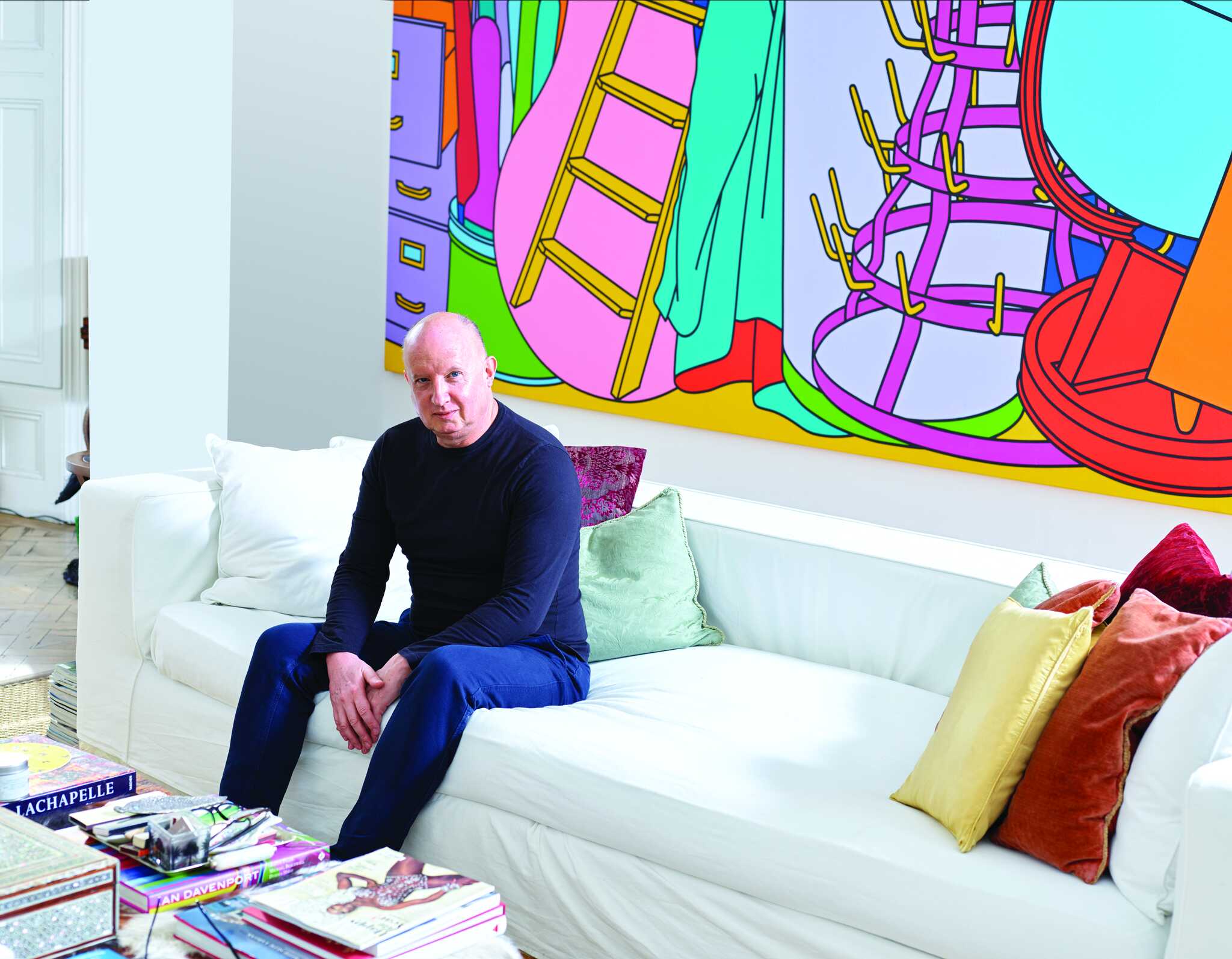The Connoisseur: Robert Tibbles
PASSION PROJECT
Words by GILL MORGAN

For a man who has amassed such a significant art collection, former bond trader Robert Tibbles is refreshingly candid – and modest. His collection of works by YBAs – the Young British Artists, including Damien Hirst, Gary Hume, Sam Taylor-Johnson, Gilbert & George, and Michael Craig-Martin – was built up from the late 1980s onwards, when the Brit Art scene was in its infancy. Only Charles Saatchi was as early to the party. Yet today, as he prepares to sell the collection through Phillips, the auction house, Tibbles simply says: “How do I know what’s good? I don’t. When I say good, I mean it rocks my boat. These works were put together with a certain amount of love. And now they’re viewed in a similar way. Seeing all the auction houses confirm at a basic level that what I’d done was good – that was very satisfying."
Tibbles, 59, is thoughtful and heartfelt when discussing his collecting life. His purchases have been astonishingly astute – a Hirst medicine cabinet, Bodies, which he bought for $780, has an estimate of $2 million – yet he emphasizes the emotion at the heart of collecting: “If someone wants to start collecting, there has to be something in here [he thumps his chest]. It’s a leap of faith, almost a blind date. When I wanted something, I really wanted it."
For Tibbles, the art needs to work on many levels, so that he can always find something new in it, and “I want to be amused, shocked, stunned, charmed. I’m not into collecting as a nerd-fest. I’m interested in the series of emotions."
It all started in a very low-key way. Tibbles was in his early twenties and working in finance in London when he bought his first apartment. All he had on the walls were two Turner prints he’d bought at Tate Britain, where his mother worked selling postcards. “But then I thought, I don’t want posters, I want something that’s actually been done by an artist," he recalls. He met art dealer Richard Salmon socially. “I told him I hadn’t got much money but I wanted to buy some stuff, and his eyes lit up like an electronic game machine!"
And so it began, a roller-coaster ride through the “Cool Britannia" years, when Tibbles, by day, would sell bonds at UBS, but visit artists’ studios and graduate shows by night. He went to Freeze, the seminal 1988 exhibition organized by a young Damien Hirst and his fellow artists, and began to get close to dealers at the heart of the YBA scene. These were the days when artists like Hirst and Sam Taylor-Johnson would pop round to his apartment to install the works themselves. Tibbles’ advice for would-be collectors is to have a little humility: “The best thing you can do is accept that you know very little. Dealers prune stuff, give you a lot of information and, crucially, a link to the artist. It’s important you have a dealer who understands what you like."
Asked to name his favorite pieces in his collection, Tibbles reacts as if I’ve asked him to name his favorite child. He does concede, though, that there are four standouts: Gilbert & George’s City Fairies; Damien Hirst’s Bodies and Antipyrylazo III, and Michael Craig-Martin’s Full (pictured), which had pride of place in his drawing room. Craig-Martin has become a good friend.
And the decision to sell? Having built up the collection mostly during the heady era when the works were being produced, his attempts to add to it in subsequent years felt strangely flat. He realized that the collection was complete – it was time to let it go and begin again, diving back into the world of graduate art shows and fringe galleries. “I’m waving it off with a kiss," he says. “I just want whoever buys the work to be really moved by it."

